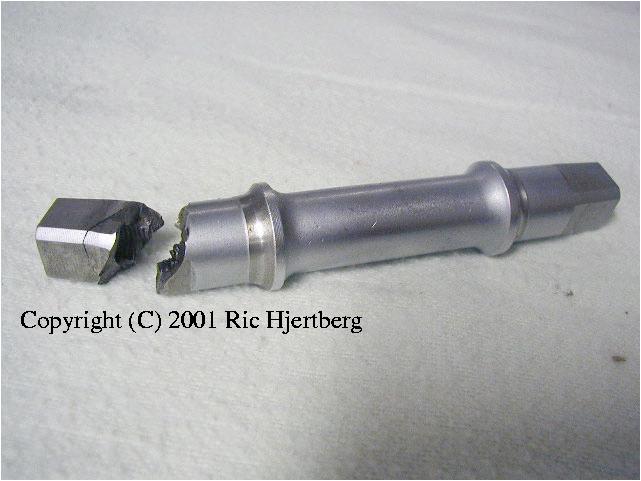
Ric Hjertberg <ehjertberg@yahoo.com> was generous enough to provide some photos of cranks and spindles that were broken in service. ``You never save the broken stuff as often as you should!''
Ric collected these samples over many years while running Wheelsmith in Palo Alto, CA. Many broken parts were returned to the maker for warranty service; many others have been recycled or have been packed away. The samples shown here illustrate several types of failure, but are not representative of the brands or liklihood of types of failures. Similarly, the photos do not show enough detail (grain structure, discoloring) to allow analysis.
All images shown here are Copyright (C) 2001 Ric Hjertberg <ehjertberg@yahoo.com>; please contact Ric for copying, display, or other use of these pictures.
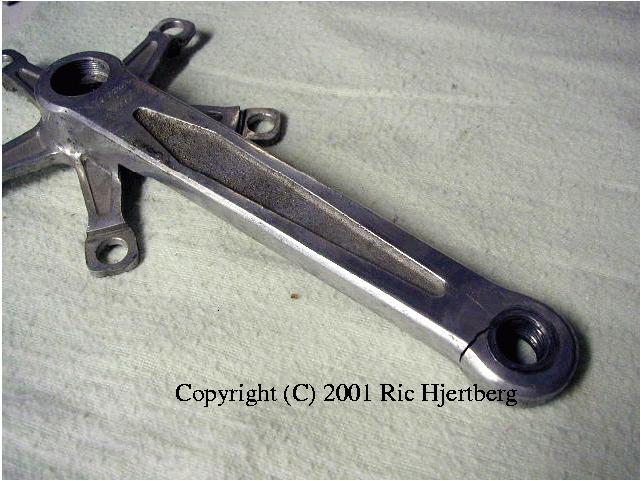
Nervar right, 180mm, pedal eye fracture Long arms over-represented among failures. Why? Probably just that big, strong riders ganged up on them.
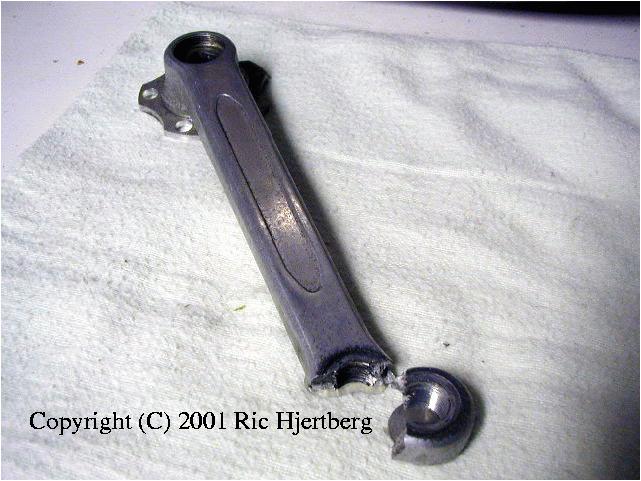
TA right, 175mm, pedal eye fracture.
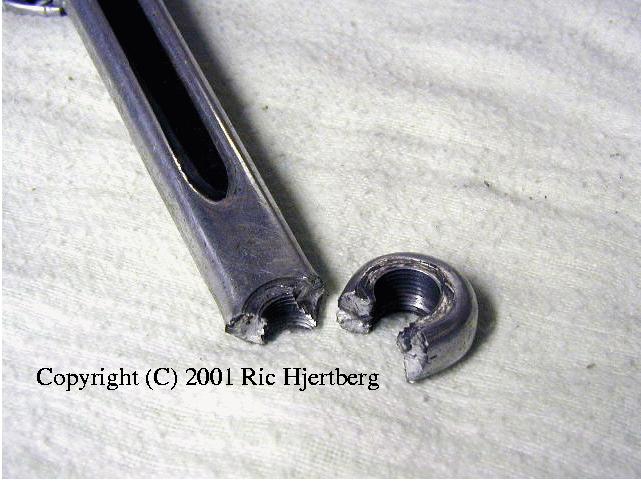
TA right, 170mm, pedal eye fracture.
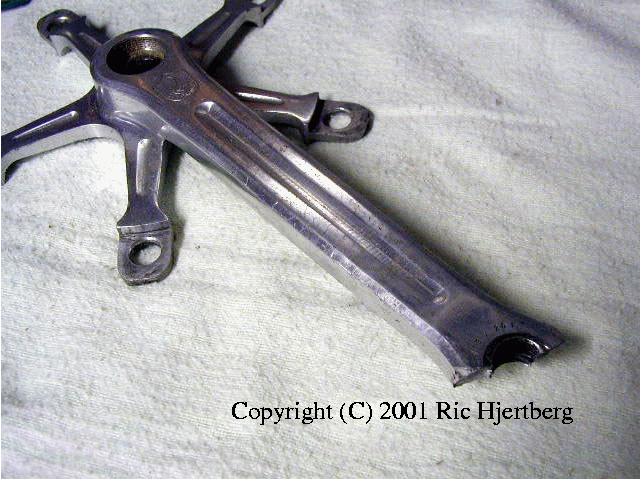
Campag right, 175mm, pedal eye fracture.
(Garrett Smith <engineering@truvativ.com> says that pictures [crank-fail-004], [crank-fail-005], and maybe [crank-fail-006] have the cracks in locations very similar to the cracks he sees forming on test parts in the 4:30 position on their fatigue machine, and is also shown by parts under ISO/DIN test.)
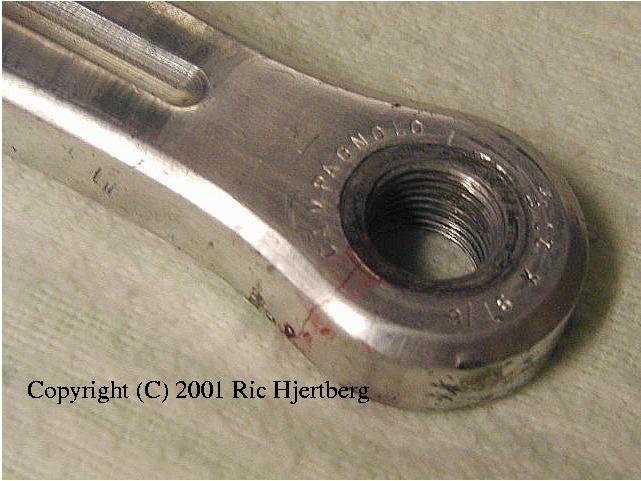
Campag right, 170mm, pedal eye fracture.
This image shows clearly then indentation that usually occurs where the pedal shoulder rests on the crank. The indentation is not from high forces -- you can take a new crank, tighten and then loosen it, and the aluminum will not be indented. The indenting is because even a tight pedal moves slightly against the crank, and the rubbing motion gradually wears away the softer crank.
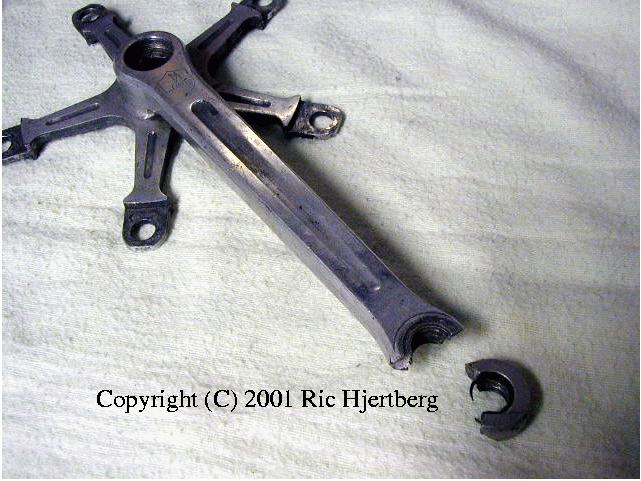
Campag right, 175mm, pedal eye fracture.
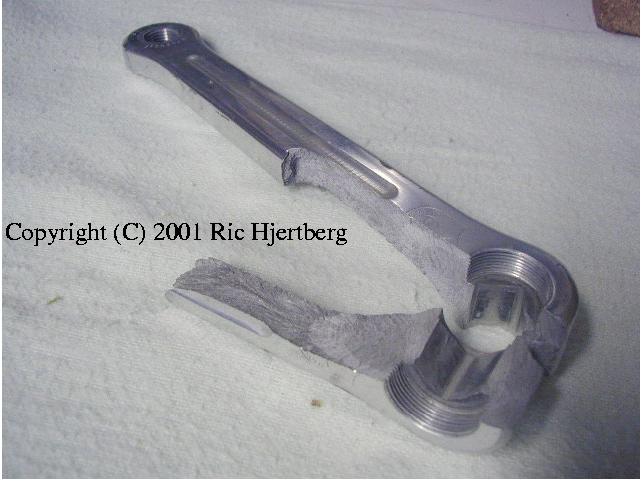
Campag left, 175, lengthwise failure [...], crack seems to have originated at square spindle attachment. Nice, eh?
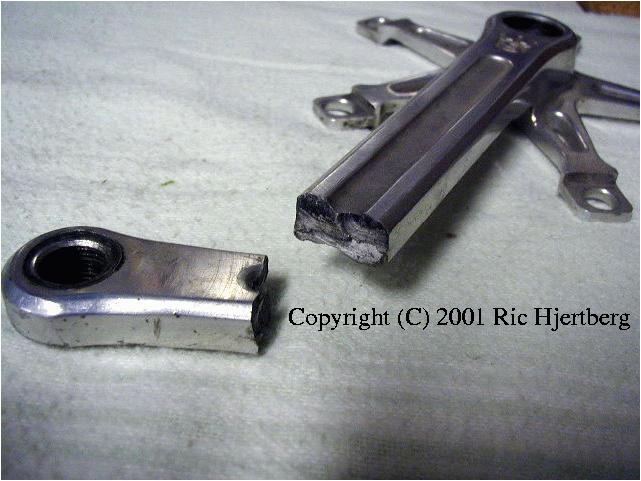
Sugino right, 171 (remember those?), break above pedal eye. Just how many of these are related to abrasions from toe straps and "vanity grooves"?
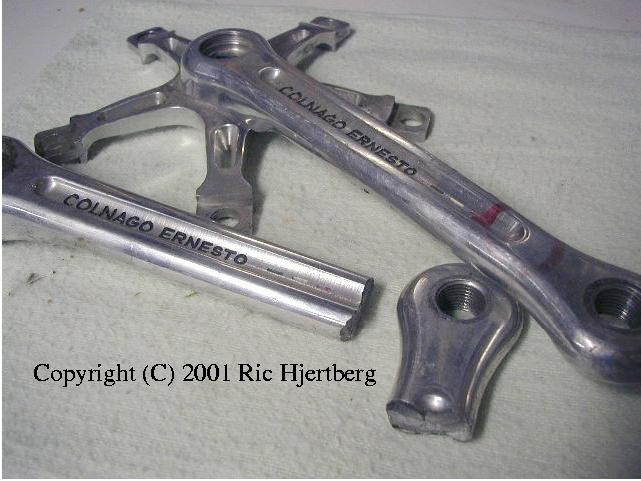
Fancy "Ernesto" jobs, 170mm, probably sculpted out of Ofmega, Gipemme, or worse. One crank has only a small crack over which red marker was applied. The other is broken.
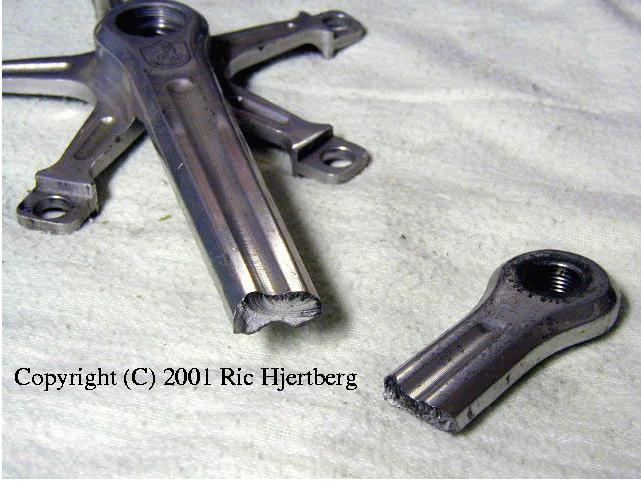
Campag right, 175mm, break above pedal eye
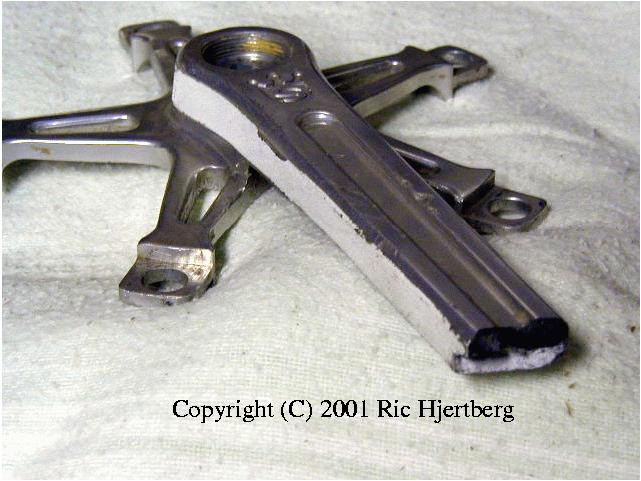
Sugino right, 171mm, break above pedal eye
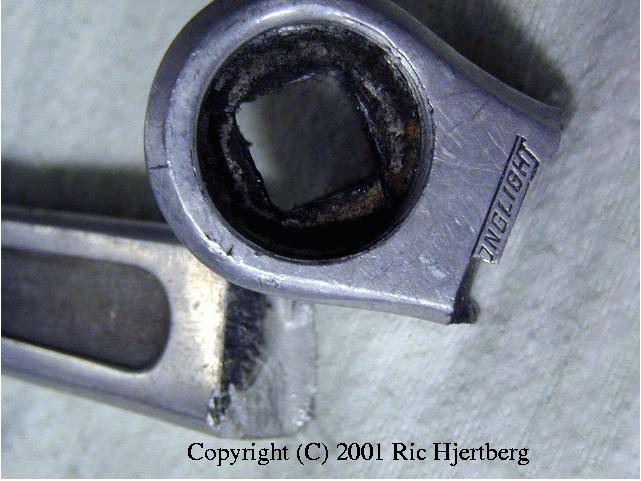
Stronglight left, 175, break at spindle end. Right along engraving! Nice fuse.
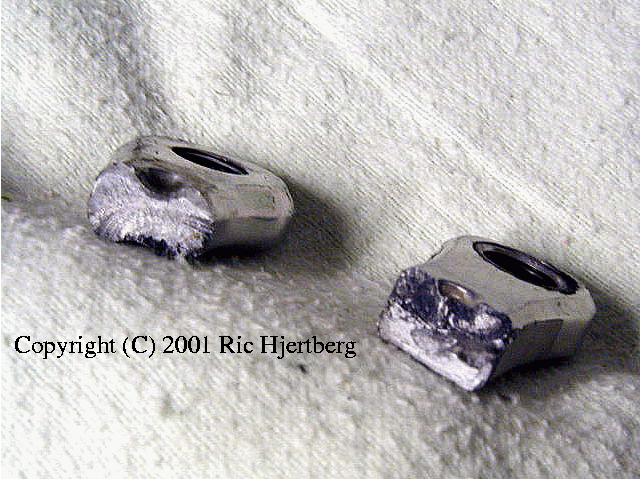
Two arms broken above the eye, rest of the arms missing. One Campag, other Sugino.
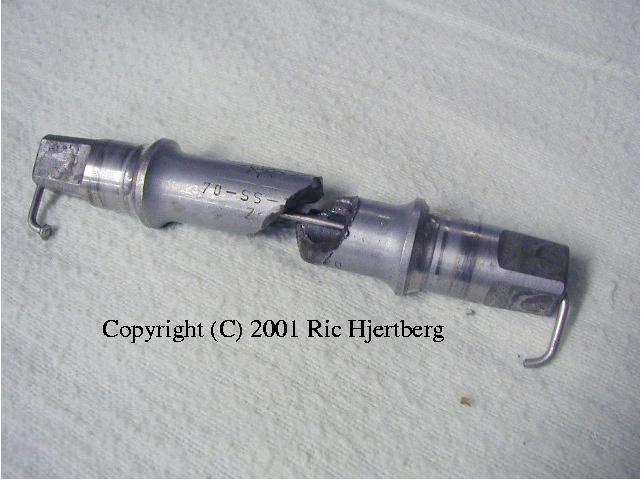
Three broken at square taper and one in the center! Spindle failures were/are numerous.
(Garrett also says that these spindle failures look typical. He usually sees them break in the square as in the last three pictures. He has only seen consistent mid-spindle failures when there are surface ``defects'' in that area such as markings, engravings, or indentations left by a hardness test prior to assembly.)
Cranks lead hazardous lives. Many break "from" pedal cornering/crashing traumas, nasty scratches and abrasion from straps and ankles, corrosion, etc. Pedal eye failures seem ominous but not some decisive majority. Fixing that so that cranks last long enough to break elsewhere, catastrophically of course, is possibly misspent. We used to figure that smart riders replaced their equipment, especially bars, on a prudent basis.Campag cranks were the vast majority of failures because they saw the really serious miles. Victims were sure not to stray from Campag for fear of even worse experiences. The more of their cranks you broke the more you recommended to others like yourself to use nothing else.
See also FAIL-002.html